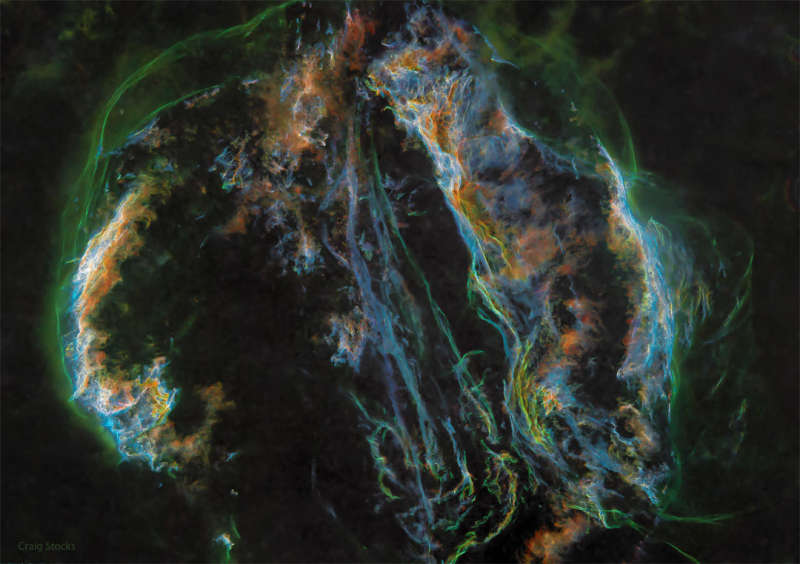Credit & Copyright: Craig Stocks
(Utah Desert Remote Observatories)
Explanation:
Ten thousand years ago, before the dawn of
recorded human history,
a new light would have suddenly have appeared in the
night sky and faded after a few weeks.
Today we know this light was from a
supernova,
or exploding star,
and record the expanding debris cloud as the
Veil Nebula, a
supernova remnant.
Imaged with color filters featuring light emitted by
sulfur (red),
hydrogen (green), and
oxygen (blue),
this deep wide-angle view was processed to remove the
stars
and so
better capture the impressive glowing filaments of the Veil.
Also known as the
Cygnus Loop, the
Veil Nebula
is roughly circular in shape and covers nearly
3 degrees on the sky toward the
constellation of the Swan (Cygnus).
Famous nebular sections include the
Bat Nebula, the
Witch's Broom Nebula, and
Fleming's Triangular Wisp.
The complete supernova remnant lies about 1,400
light-years away.
1999 2000 2001 2002 2003 2004 2005 2006 2007 2008 2009 2010 2011 2012 2013 2014 2015 2016 2017 2018 2019 2020 2021 2022 2023 2024 2025 |
Январь Февраль Март Апрель Май Июнь Июль Август Сентябрь Октябрь Ноябрь Декабрь |
NASA Web Site Statements, Warnings, and Disclaimers
NASA Official: Jay Norris. Specific rights apply.
A service of: LHEA at NASA / GSFC
& Michigan Tech. U.
|
Публикации с ключевыми словами:
Veil Nebula - supernova remnant - туманность Вуаль - остаток Сверхновой
Публикации со словами: Veil Nebula - supernova remnant - туманность Вуаль - остаток Сверхновой | |
См. также:
Все публикации на ту же тему >> | |
